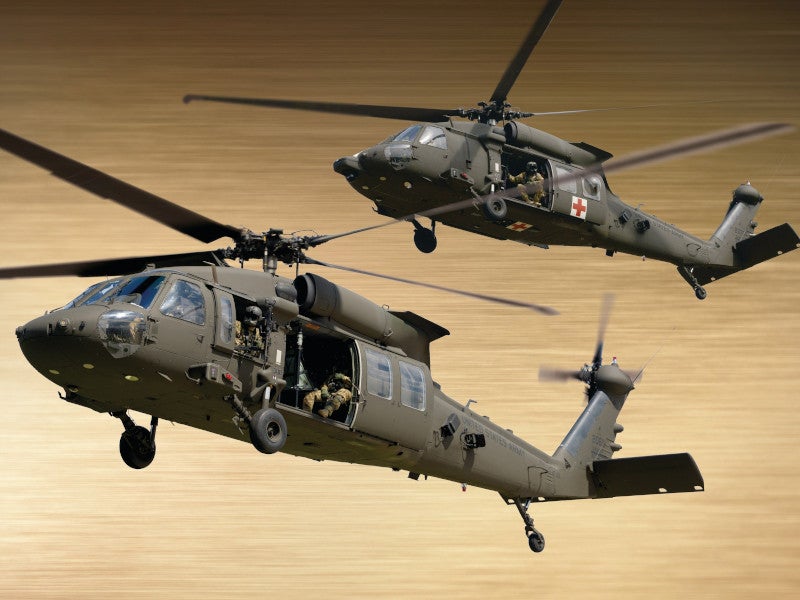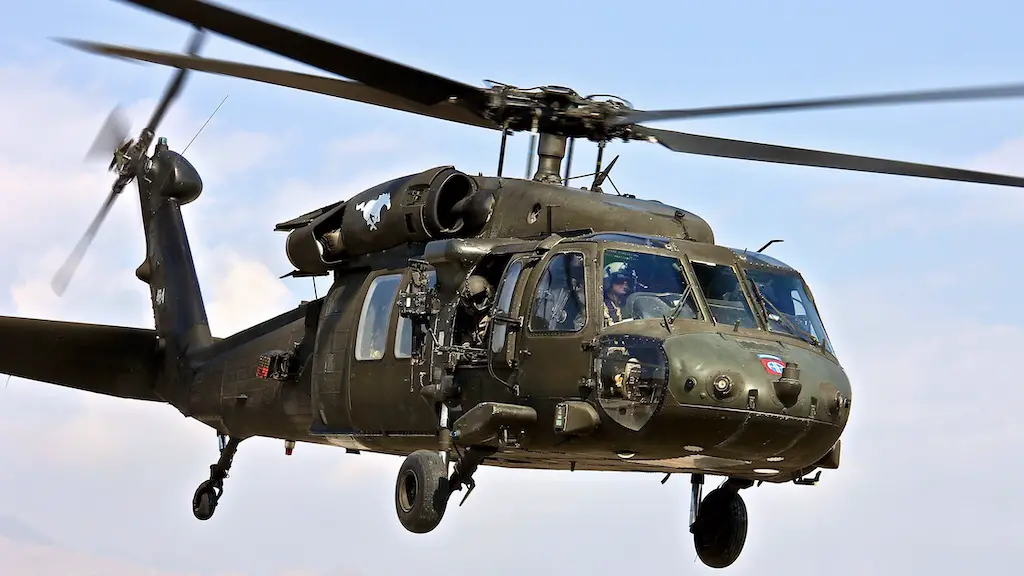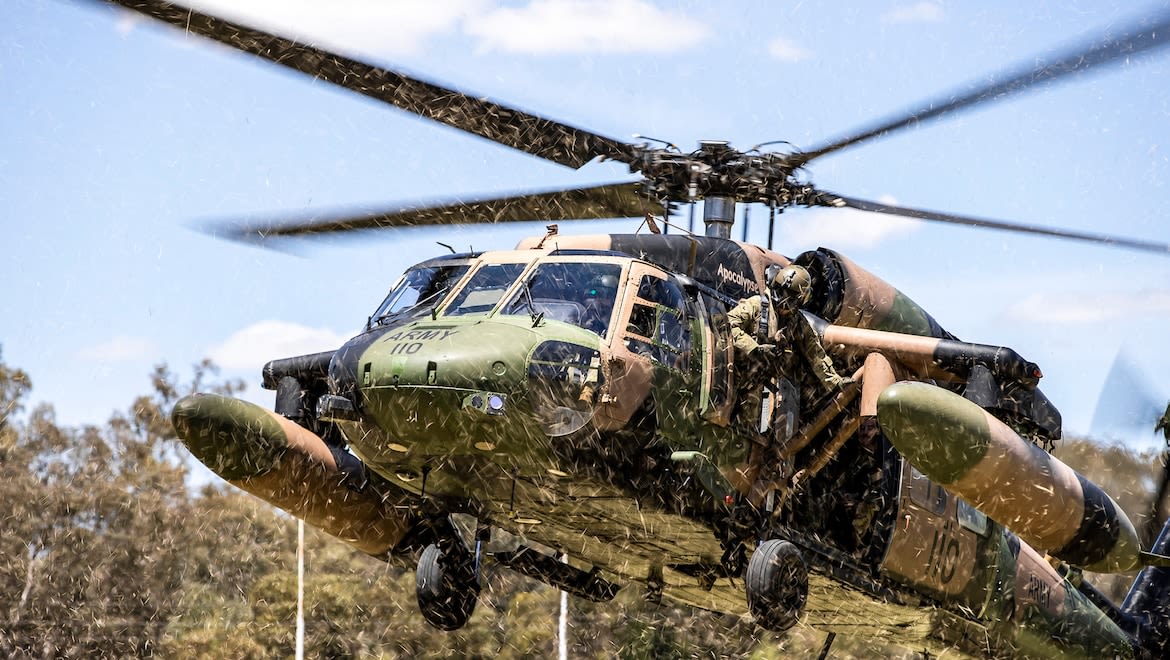Taking Flight: Uh-60 Black Hawk Pilot Qualification Process Explained
Taking Flight: Uh-60 Black Hawk Pilot Qualification Process Explained
Blog Article
The UH-60 Helicopter: Navigating With Its Background, Design, and Considerable Duty in Aviation
The UH-60 helicopter, frequently described as the Black Hawk, stands as a testament to the improvements in aviation technology and its obvious influence on both military and noncombatant procedures. From its modest beginnings to its existing standing as a sign of dependability and flexibility, the advancement of the UH-60 has actually been noted by continuous technology and adjustment to satisfy the advancing needs of the aviation industry. As we delve into its background, design details, and the critical role it plays in various sectors, a deeper admiration for this legendary helicopter emerges, clarifying the significant contributions it has actually made to the realm of air travel.
Evolution of the UH-60 Helicopter

The development of the UH-60 helicopter can be mapped back to the requirement for a trusted and versatile energy airplane that could satisfy the requiring requirements of contemporary armed forces procedures. Developed by Sikorsky Airplane, the UH-60 Black Hawk initially took flight in 1974, with the U.S. Military becoming its key operator. Over the years, the UH-60 has undertaken several upgrades and versions to boost its capabilities and efficiency.

Design Developments and Attributes

Additionally, the UH-60 features a sophisticated avionics collection that consists of advanced navigation systems, interaction tools, and electronic display screens. These technical improvements enhance situational awareness for the crew, boosting general objective effectiveness and safety and security. The helicopter's sizable cabin style helps with simple and fast loading and discharging of troops, tools, and casualties, making it a functional possession for military procedures and catastrophe relief initiatives.
Furthermore, the incorporation of composite products in crucial structural parts minimizes weight while maintaining durability, raising the UH-60's efficiency and fuel performance. The UH-60 helicopter's ingenious design components collectively add to its track record as a highly qualified and trustworthy aircraft in both army and private aviation fields.
Armed Forces and Civilian Applications
With flexible abilities suited for an array of functional needs, the UH-60 helicopter offers both noncombatant and army sectors efficiently. The UH-60's advanced avionics, protective systems, and versatility have strengthened see this page its placement as a keystone of army helicopter fleets.
In addition, the UH-60's flexibility for VIP transport and offshore procedures additionally highlight its relevance in private applications. Whether in noncombatant or army usage, the UH-60 helicopter continues to show its worth as a versatile and crucial airborne platform.
Impact on Aviation Procedures
Having established its relevance in armed forces and noncombatant applications, the UH-60 helicopter's impact on aviation operations extends beyond its versatile abilities to influence a broad range of aerial objectives. In armed forces settings, the UH-60 plays a vital duty in army transportation, search and rescue operations, medical evacuation, and special procedures sustain.
Furthermore, the UH-60's dependability and endurance make it a preferred choice for energy missions, including transport of freight and employees to remote locations. On the whole, the UH-60 helicopter substantially influences aviation procedures by supplying unmatched capacities and assistance across a wide range of objectives.
Future Developments and Potential Customers
The evolution of the UH-60 helicopter is positioned to transform aeronautics capabilities and improve functional paradigms in the coming years. Innovations in technology and layout are driving the development of next-generation UH-60 versions that promise boosted agility, objective, and rate versatility. One vital area of emphasis for website link future UH-60 versions is enhancing independent capabilities to improve operational effectiveness and safety and security. By incorporating sophisticated independent trip systems, the UH-60 can reduce pilot work, make it possible for complex objectives in tough environments, and boost overall objective efficiency.
In addition, there is an expanding emphasis on sustainability and fuel effectiveness in the design of future UH-60 helicopters (uh-60). Suppliers are checking out brand-new products, propulsion systems, and wind resistant enhancements to reduce environmental impact and operating prices. These developments not just profit the environment but also add to the long-term viability and competitiveness of the UH-60 in the rapidly evolving aeronautics market
Final Thought

The UH-60 helicopter, commonly referred to as the Black Hawk, stands as a testimony to the advancements in air travel modern technology and its indisputable effect on both army and civilian operations.Having established its importance in army and civilian applications, the UH-60 helicopter's influence on aviation operations extends past its versatile abilities to affect a vast array of aerial objectives. On the whole, the UH-60 helicopter significantly impacts air travel procedures by giving unmatched capabilities and support across a broad spectrum of objectives.
The advancement of the UH-60 helicopter is poised to transform air travel capabilities and reshape operational paradigms in the coming years. As technology continues to advance, the future developments and prospects for the UH-60 helicopter stay appealing, ensuring its ongoing significance in the area of air travel.
Report this page